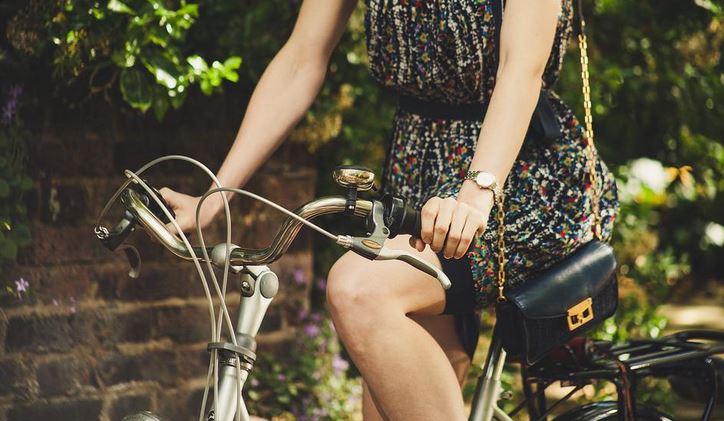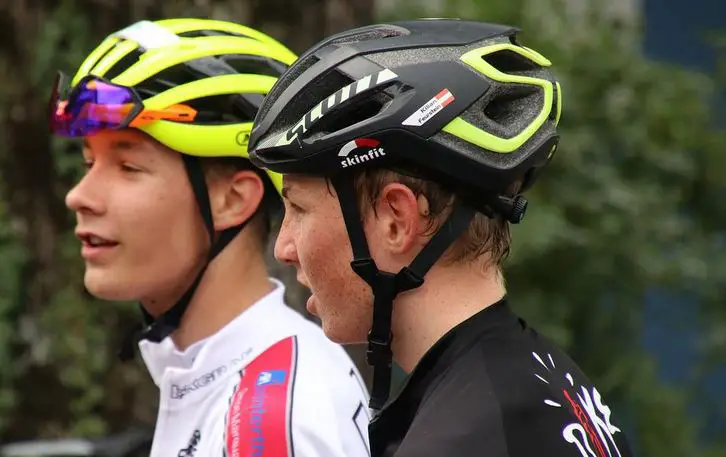Mountain bikes come in two varieties, for men and women. These have small differences in their parts, performance and price.
Both kinds of mountain bikes can take you anywhere with ease, but they have differences that make each design better suited to different types of riders.
In this post, we’ll explore the difference between men’s and women’s mountain bikes, and how those differences can affect your riding experience.
Are There Male and Female Bikes?
While some companies may design their bikes with unisex appeal in mind, the vast majority of mountain bikes on the market today are designed specifically for either men or women.

This is because men and women have different body shapes, which impacts both the fit of the bike as well as the rider’s center of gravity.
In general, men have longer torsos and legs in proportion to their height than women, meaning that they tend to need a larger frame.
Also read: Should I Cut Down My Steerer Tube?
They also tend to have narrower hips, which can make it difficult to find a comfortable position on a unisex bike.
Women, on the other hand, tend to have shorter torsos and wider hips, making it easier for them to find a comfortable position on a unisex bike.
Men’s vs Women’s Bike: The Differences
It may be challenging to tell the difference between men’s and women’s mountain bikes. After all, they have the same design and features but when you take a closer look at the details, there is a lot of difference in each model.
Let’s have a look at how they differ:
Frame
Women’s mountain bikes typically have shorter top tubes than men’s mountain bikes.
Why are women’s bike frames different? This is because women tend to be shorter than men, on average.
Another difference is that women’s mountain bike frames often have a lower standover height. This makes it easier for shorter riders to dismount and mount their bikes.
Men’s mountain bike frames also tend to be wider than women’s frames, which can provide more stability and control for the rider.
Gears
Men’s mountain bikes typically have more gears than women’s mountain bikes.
This is because men’s mountain bikes are designed for riding on rougher terrain.
Women’s mountain bikes, on the other hand, are designed for riding on smoother terrain.
They usually have 3-7 gears with a wider range in gearing to help riders climb hills or maintain speed while pedaling downhill.
These lower gears also make it easier to get back up steep inclines after falling off your bike.
Tires
The The difference between men’s and women’s mountain bikes tires is that, Men’s bikes typically have wider tires, which provide more stability on rough terrain.
Women’s bikes usually have narrower tires, which are better for maneuverability.
Both types of tires have their pros and cons, so it’s important to choose the right bike for your needs.
Brakes
Men’s mountain bikes typically have V-brakes or disc brakes, while women’s mountain bikes usually have linear-pull brakes.
V-brakes are more powerful, but they can be difficult to control if you’re not experienced.
Disc brakes are easier to control, but they don’t provide as much stopping power.
Suspension
The difference between men’s and women’s mountain bikes suspension is that, men’s mountain bikes tend to have more suspensions than women’s mountain bikes.
This is because men are generally heavier than women, so they need more suspensions to absorb the impact of bumps and jumps.
Crossbar
On a man’s bike, the crossbar is generally lower than on a woman’s bike.
Why do women’s bikes have lower bars?
This is because women tend to have shorter torsos than men, so the crossbar needs to be higher to provide them with a comfortable riding position.
Handlebars
The difference between men’s and women’s mountain bikes handlebars is that women’s bikes tend to have narrower handlebars than men’s bikes.

This is again because women have shorter torsos than men, so they need less distance between their hands and their hips when riding.
Seat
A woman’s seat is typically wider than a man’s, to accommodate her wider hips.
Also read: Can I Cut My Bike Seatpost?
Additionally, a woman’s seat is often shorter than a man’s, to accommodate her shorter legs. The angle of a woman’s seat is also often different from a man’s, as women tend to have less flexibility in their hips.
Weight
The difference between men’s and women’s mountain bikes weight is that women’s bikes are more light weight than men’s bicycles. (Generally, not always true)
When it comes to mountain bikes, weight is an important factor. Heavier bikes are harder to maneuver and can be more difficult to control on rough terrain. They can also be a pain to carry if you have to hike your bike up a hill.
Can a Man Ride a Women’s Mountain Bike?
While a man can technically ride a woman’s mountain bike, it is NOT recommended.
Women’s mountain bikes are designed to fit the average woman’s body, which is typically shorter and has less upper body strength than a man.
As a result, a woman’s mountain bike will have a shorter top tube and steeper angles, making it less stable and more difficult to control for a man.
The weight difference between the two types of bikes should also be taken into consideration.
A man would have a hard time handling a heavier women’s mountain bike while negotiating rocky terrain.
Many men prefer women’s mountain bikes because they tend to be lighter in weight (note: this may not always be true).
So unless you’re comfortable riding an ill-fitting bike, it’s best to stick to the gender-specific models.
Difference Between Men’s and Women’s Bicycle Saddles
The difference between men’s and women’s bicycle saddles is the width.
Men’s mountain bikes usually have wider saddles than women’s mountain bikes.
This is because many men tend to ride in a more aggressive stance, which requires them to sit on the saddle with their legs further apart.
Women tend to use a more relaxed or balanced riding style, so they prefer narrower saddles.
The shape of the saddle can also vary depending on gender.
Women typically have rounder and softer saddles while men’s saddles are more angular and pointy like an upside-down triangle.
Difference Between Men’s and Women’s Bicycle Helmets
Even though bicycle helmets are occasionally marketed exclusively to men and women, they are essentially unisex. The primary distinctions may be based on size or color.

Women have naturally smaller-sized heads. This is why most brands of women’s bicycle helmets provide multiple size options (XS, S, M, L, XL).
Men’s skulls are not just proportionally larger, but also longer. When it comes to the forehead, women often have longer foreheads than men.
Additionally, a person’s bone density in the skull has an impact on how well a bicycle helmet fits. Larger helmets are more commonly required by men due to their greater bone mass than by women.
However, certain women’s cycling helmets may include additional features, such as a ponytail slot, to accommodate women’s hairstyles.

